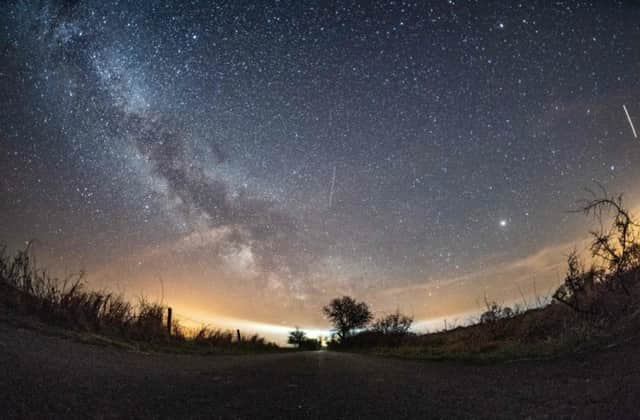This is when and how you can see the Lyrid meteor shower over Easter weekend


Stargazers in April will be in for a treat when the Lyrids meteor shower rolls into Earth’s skies for its annual display.
The shower is not one of the year’s most spectacular, but can still provide those looking skyward with upwards of 20 shooting stars per hour.
What are the Lyrids?


Advertisement
Hide AdAdvertisement
Hide AdThe Lyrids are one of the oldest known meteor showers, with records dating back 2,700 years. The ancient Chinese are said to have watched Lyrid meteors falling "like rain" in the year 687 BC.
The Lyrids are caused by the interaction of the Earth’s atmosphere with the dust trail left by the Comet C/1861 G1 Thatcher.
When particles of debris enter the Earth’s atmosphere, they burn up, producing a trail of light across the sky.
Comet C/1861 G1 Thatcher only orbits the sun every 415 years, but occasionally, specific planetary arrangements can steer the dust trail into Earth’s path, intensifying the shower roughly every 60 years.


Advertisement
Hide AdAdvertisement
Hide AdThat won’t be happening in 2019, though observers could still be treated to some ‘Lyrid fireballs’ - brighter meteors that can even cast shadows for a split second and leave behind a trail of glowing ionized gas.
(Photo: Getty)
How to see them
The Lyrids should be visible with the naked eye, dependent on a couple of factors.
Weather plays a big part, and with April skies often clouded over, spotting the meteors might be easier said than done.
Living in an area with minimal light pollution will increase your chances of spotting a fireball, and those living in built-up areas are advised to travel to less populated spaces if they really want to see the shower.
Advertisement
Hide AdAdvertisement
Hide AdWrapping up in warm clothes is recommended, and you should allow up to 20 minutes for your eyes to fully adjust to the night sky.
If the moon is out, and it's bright as it is expected to be on Monday night, placing yourself within a moon shadow (i.e. something that obscures it from your view) will help your eyes adjust, and may give you a better chance of spotting some meteors.
When to see them
The Lyrid meteor shower takes place between April 16 and April 25, and will peak on the evening of April 22.
The Lyrids are so called because they appear to radiate from the constellation of Lyra, and the shower will be at its most active once this "radiant" has risen - around 9 to 10pm in the north-east of the sky.
(Photo: Getty)
Advertisement
Hide AdAdvertisement
Hide AdHowever, looking directly at it may cause you to miss the more spectacular meteors, and Lyrids can actually show up in any part of the sky.
This year, you'll want to try catching meteors in the early part of the night, as the moon will rise before dawn, and the bright light from it may obscure many of the fainter shooting stars.
How ‘spectacular’ will it be?
Relative to other meteor showers on the astronomical calendar, the Lyrids are one of the less dramatic displays, but they can still offer up an average of 20 meteors per hour.
That’s nothing compared to the shower of 1803, which delivered 700 meteors an hour. That’s about one every five seconds, and the shower has been known to have dramatic outbursts.
No such outburst is predicted for 2019, but it is a hard thing to pinpoint, so you never know.
This article originally appeared on our sister site, inews